In my experience, when the ethnographic mission collapsed, this scaffolding remained standing, rich and complex, in plain view. There, the net into which I fell. (Rosaldo 2014: 112)
In July 2016, I have been living in Mafraq, a Jordanian town fifteen miles south of the Syrian border, for more than half a year. While I am renting a little house of my own, I have also been adopted by a local family whom I visit every day. But many others, too, show me hospitality – some of them, like Esraa and Rana, are Syrian teachers at the NGO I am volunteering with.
Sunday, 31st July 2016. I am having brunch with Esraa and Rana. Whereas most Syrians live with their families in overcrowded, damp accommodation, Esraa and her husband Maher have a flat in a brand-new building to themselves. As Maher works in a kebab restaurant all night, he often sleeps in, and Esraa takes the opportunity to invite her friends over – a rare occasion for some innocent fun in a conservative town with few opportunities for women to gather outside the family home.
When I arrive, the girls tease me for being late. “You are becoming more like a Syrian!”, they giggle. While Esraa affectionately cuts pieces of sandwiches and fruits for me, the conversation soon turns to the hospital in a nearby town where she is going to give birth that very week. Esraa is not one to be easily frightened. Still, she has a congenital heart defect, and she admits that she is afraid of the planned Caesarean section, not for herself, but for the baby. “When they cut open your stomach, you know…”
Her absent mother, whom she has not seen since she left Syria, looms in the background of today’s chat. I compliment Esraa on her beautifully embroidered white hijab, a piece of her mother’s “that you can’t find here”.
When we say goodbye, she tells me that she sent out her husband to buy me “a special gift”, and proudly hands over a coffee mug shaped like a camera lens. I’d like to think that her present hints at how she sees me: as a curious person, an investigator – someone not unlike herself, as she trained in journalism before the war. She also forces some of her hairbands, the sort that women wear under the hijab, on me. Only recently have I discovered that Esraa has long, unruly, beautiful curls.
Half-jokingly, she says: “So I will see you on Thursday [at the hospital], if I am still alive.” But I quickly dismiss her premonitions – “don’t you know that this is bad luck!” Outside, Rana and I excitedly make plans for a baby shower, “the way they do it in American movies!”
Tuesday, 2nd August. I take the bus from Mafraq to Amman to meet with an American friend. At lunch time, I buy a pack of pink balloons in the old souq – “It’s a girl!” Later, my friend and I purchase overpriced baby onesies in an upper-class neighbourhood in West Amman. Mine has a dinosaur on it. After all, I decide that I will not give Esraa’s baby typical “girl’s stuff”, but something that reflects her mother’s personality: bold and independent – the survival skills a girl would need when born into a country that makes it clear in multiple ways that Syrian “guests” could never become “natives”.
2nd August, at night. I receive two agitated phone calls from my landlord, a distant cousin of Esraa’s, and my Jordanian host brother, who happens to be my landlord’s best friend. In conservative Mafraq, it is quite unusual for unrelated males to call a woman after sunset, so I am alarmed. But I understand very little and have to look up the words they keep repeating to me.
“Julta” means “blood clot”. “Ghairuba” means “coma”.
Wednesday, 3rd August. At 8am, my landlord calls again; now his voice is very calm. “I regret to inform you…” According to Islamic ritual, the funeral will take place the same day, and I frantically contact the other Syrian teachers, waking them up to a terrible surprise. I announce that I will fetch them before four, so we can all see Esraa again before the men take her to the cemetery, a place where women do not go. The baby is alive.
On the bus ride home, I rest my forehead against the window, staring out into the barren steppe. The balloons and baby clothes are still in my backpack; by now, they feel very heavy.
In the afternoon, I put on a long black abbaya and a black headscarf, before heading to a Syrian friend’s flat. Fortunately, my friend, a headstrong woman, takes over; she organizes a taxi and forces the grudging driver to do rounds until we have picked up all of the teachers. In the street before the house where the wake is taking place, I run into Maher as he is carrying plastic chairs for the newly arrived guests. We both advert our eyes, his face frozen in shock.
Inside, we are greeted by various aunts. Maher and other men lay out the body on the floor and fold back the shroud; Esraa wears a white headscarf, maybe her mother’s. I cry. The older women bring the baby, a gorgeous little girl. I cry. My friends make me sit on the couch and sip coffee from tiny mugs, because this is what you do at a funeral. I cry. After half an hour, I leave, slowly dragging my feet to my host family’s house. The town seems deserted. In their living room, my Jordanian brothers quickly go into hiding, scared by the look in my eyes. I bid them farewell, but my host mother, always ingenious, does not allow me to leave. “We bought 15 kg of molokhiya [an Egyptian plant], and I need your help with it.” This is women’s work, but her husband joins us in the courtyard. For the next two hours, we will pick leaves in the soft summer breeze of an early evening. For the next seven days, I will barely leave bed.
————————————————————————————————————————————–
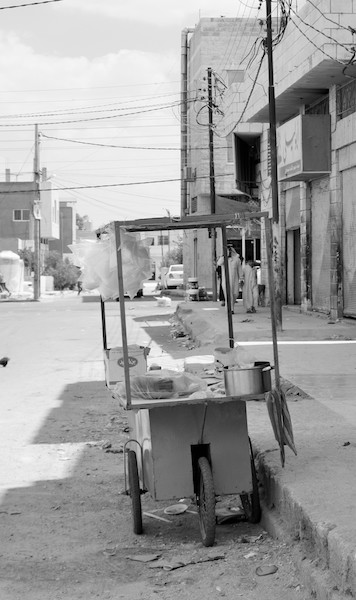
This approach responds to two recent debates about the role of emotions in anthropological study. It takes as its starting point the recognition that, besides the “academic” and logistical aspects of research, ethnographic fieldwork also involves managing interpersonal relationships and multiple roles in the field, as well as dealing with one’s own feelings. Having emotions in the field is not a mere side-effect of doing ethnography. To borrow from Hochschild (1983), it is actual emotional labour, and thus a central part of the job description (cf. Blix & Wettergreen 2015).
But the ethnographer’s emotions are not only part of the effort she makes – they are also potential “data”.
Following anthropology’s “reflexive turn” in the 1980s and 90s, much attention has been paid to issues of positionality, i.e. the impact of the researcher’s gender, class, race etc. on the field, but less so to the epistemological value of her emotions. Recently, Davies and others have called for a more systematic approach to analysing the researcher’s “states of being during fieldwork” (Davies 2010:1; cf. Kleinman & Copp 1994; Flam & Kleres 2015, and many others).
One of the first to pursue this line of enquiry, Rosaldo (1989) famously used his grief over the death of his wife Michelle, herself a respected anthropologist, as an entry point into the study of headhunting in the Philippines. He had long been trying to make sense of his informants’, the Ilongot’s, reaction to bereavement, as the death of a loved one would propel men to behead members from other tribes. Only when faced with the devastating loss of his wife, Rosaldo writes, he understood the visceral force of rage in grief, and the role of cultural practices in working through it during the process of mourning.
Rosaldo’s seminal article deeply resonated with me. By the time I returned to the UK in early 2017, my apathy over Esraa’s death had long been replaced by anger: anger at the doctors for not saving her; anger at the murderous Syrian regime that had forced her to live abroad and separated her from her family; anger at myself for not taking her fears seriously. Anger at the entire world for allowing this death to happen. This wild fury has spurred me to give passionate presentations at conferences, and to run many miles a night; but I did not know how to address it in writing, nor the event that had triggered it.
But Rosaldo’s work also spoke to me in another way. Much of the incommensurate nature of his wife’s death comes from its being accidental: she slipped and fell off a cliff on their first day in a new field site. “Stupid, stupid, stupid”, as her bereaved husband later writes in a poem (2014: 92). This takes me to the core of my hesitancy about writing of Esraa’s death. When I first met her at an NGO meeting in the second month of my fieldwork, she was four months pregnant, and her belly continued to grow while I got my bearings in Mafraq. Over time, her pregnancy came to signify the progress I made in my ethnographic investigation. (It also accompanied the growth of the home-schooling project that the NGO, the Syrian teachers and I myself were involved in.)
But her untimely death stopped the clock. On a personal level, her sudden demise took me – and all those who loved her – by surprise. But I found it incommensurate, too, because it seemed to resist my every attempt at including it into a coherent narrative of my fieldwork.
At the time, I felt reluctant about including into a doctoral thesis something as private and painful as a friend’s passing. I also worried about reducing her in my writing to a “dead refugee”, to cut down the complexity of her life and ties with others to legal and humanitarian labels.
But that was not all. I had come to Mafraq to study displacement, but Esraa’s being a refugee did not explain anything about her death. After all, she had not died from bullet wounds or barrel bombs in the Syrian civil war. Nor had she fallen victim to the refugee-reception system in the host country that restricts access to public healthcare for non-citizens. A subsequent investigation at the hospital did not reveal medical errors either. Nor was Esraa’s fate representative of the particular refugee demographic that I had found in Mafraq. While most of her compatriots were barely literate peasants from remote rural areas in central and northern Syria, here was a university-educated woman who had come to Jordan on her own before the war to take up a teaching position, and eventually to Mafraq, because a Syrian aunt of hers had married a local there some forty years earlier.
Being a refugee did not kill Esraa. A blood clot did. As simple as that. As stupid as that. Then what was there to write about?
Finally putting my memories of these days on paper, I am struck by how, in my own grief, I was sheltered by others: the Syrian and Jordanian friends, aunts, mothers and siblings by my side. When Esraa was still alive, we joked about how her unborn daughter would marry my first son, “so we can become one family.” However, it was her death that made visible the workings of the “fieldwork family” that I had established since my arrival to Mafraq.
It is a common practice for ethnographers to negotiate their entry into the field by becoming “family” to their hosts. In Mafraq, calling somebody “a daughter” or “an aunt” is a widely used idiom for framing friendly relationships with non-kin. (“Treat her like your sister”, my Jordanian host brothers were told by their father, to dissipate potential rumours about the presence of an unrelated female in their house.) But only when Esraa fell sick, did I begin to understand what being a sister meant in practical terms: getting late-night phone calls; being allocated a minor role at the funeral; staying in her daughter’s life. Reversely, faced with my enormous grief, my Jordanian host family had to devise new forms of care for their inconsolable daughter.
In his study on headhunting, Rosaldo argues that “rather than speaking of death in general, one must consider the subject’s position within a field of social relations in order to grasp one’s emotional experience” (1989: 167; highlights by the author). Thirty years later, he revisits his wife’s death in a collection of poems, many of which give voice to those incidentally present at the scene of Michelle’s accident and over the following days: taxi drivers, soldiers, anonymous bystanders. Rosaldo refers to these people as the “scaffolding”, those who create the silent infrastructure of fieldwork, but seldom get a mention in articles, monographs and conference presentations. Only when “the ethnographic mission collapses”, as he says, do they become visible again. Because that is when we rely on them most.
Hence, if my field notes and memories tell me one thing, it is that the presence and care of others made it possible for me to grieve for Esraa. In turn, her death was a crucial moment for negotiating my belonging to the field; my intense emotions gave me a sense of where I stood, what I meant to these people, what they expected from me and were willing to do in return.
Since we lacked shared religious frames of reference, “doing grief” together often translated into material practices. On the day of the funeral, my Jordanian host mother, a devout Muslim, explained to me that according to the Quran, those who die in exile, and those who die in childbirth, will directly go to paradise. “She has it covered twice”, she smiled sadly, although she knew that this came as little consolation to me as I was not a strong believer, let alone a Muslim. On future occasions, I would often repeat her words to my Syrian friends, with whom their Islamic content clearly resonated. But this did not help me. What did, though, was picking vegetables with her for hours, a practical, if not silent, attempt at drawing me back into the family circle and engaging my restless body – it allowed me to physically work through the early stages of my grief, and it calmed me down.
Another aspect that strikes me about Esraa’s death is that it seemed to invite a series of unprecedented transgressions. Her cousin’s late-night phone call showed blatant disregard for established gendered rules of communication – but also for conventional understandings of who belongs to the immediate family, and who does not. In passing on information about Esraa’s critical state, he treated me like a close relative. This role was further emphasized when I was allowed to bring the group of Syrian teachers to the funeral, and on subsequent visits. Over the last years, her husband Maher has cut contact with most of the Syrian community, the NGO and the Jordanian side of Esraa’s family. When I visit him these days, he asks me to come alone. On the other hand, my Jordanian host family has recently befriended him and his elderly mother, although they rarely, if ever, socialize with Syrian refugees in town.
I have no doubt that these transgressions were made possible by my liminal position in the field, my multiple roles as an adopted sister and daughter to Syrian and Jordanian families, as an NGO worker, and a student. Nor do I romanticize these elective kinship ties – many have been of short duration or have turned out problematic. Since I have returned to the field in 2017 and 2018, I have awkwardly dodged Maher’s repeated marriage proposals. But I honestly believe that what motivates him is more than my German passport’s promise of an easy way out. Grief has forged a bond between us, but one that has a backstory: the carefree mornings at their old flat when, waking up at noon, he would find me in his living room, joking and discussing with Esraa.
What I wish I could bring to Maher: travel documents. An exit strategy. A place to call home. What I bring instead: toys and hair clips for the little girl, who looks more like her mother with each passing year. I am still trying to figure out my new obligations as an elective sister, and how they stretch across borders and continents.
This leads me to my final point. Grieving Esraa has not gone according to an established “script”, and has involved many uncertainties. In fact, my observations tell us little about how Syrians or Jordanians “usually” mourn. By way of contrast, some months later, my Jordanian host family lost a young man of Esraa’s age. His death, while equally unexpected, triggered a standardized course of action. For three subsequent days, relatives, neighbours and even a local politician paid their respects to the bereaved parents, where they were served coffee and traditional food. It was unthinkable that I would take over any role in this.
But for Esraa’s friends and relatives, death hit at a moment when the social fabric was already stretched almost beyond limit by displacement, and relationships in exile were still being negotiated anew: within the refugee community, with the Jordanian hosts, and even with an unlikely stranger like myself. Hence, this joint Syrian-Jordanian-German funeral relied on elements that were familiar to me from previous, and more conventional, events: an intricate choreography; the hosting of guests; the men’s procession to the graveyard. However, it reassembled these standard practices in novel ways, involving outsiders like myself who had only recently entered Esraa’s life.
Looking at the hands-on forms of care, the minor and major transgressions that I have described above, brings to our attention not the ready-made scripts of grief, but rather the informal practices that people come up with in response to disorientation and shock; how they creatively reappropriate the left-overs of their previous lives. As Rosaldo, again, famously puts it “life is what happens […] while [anthropologists are] making other plans” (1985: 19).
I started drafting this post wishing that writing about Esraa’s death would make me understand something about the peculiar relationships I have built and maintained in the field. I am also hoping that by discussing my emotions during fieldwork, I might encourage other young anthropologists to be attentive to what their feelings can reveal about their field of study. As long as a cult of emotional and physical hardship during one’s first fieldwork prevails in anthropological training and the community, doctoral students are encouraged to conduct research in “difficult” and “remote” places, with little regard to the mental health risks this might entail (Widdowfield 2000; Irwin 2007; Bracke 2015). In the UK, engagement with PhD students’ emotional labour during and after fieldwork seems mostly absent from methods classes, ethics and risks assessments, and supervisorial relationships (Pollard 2009). Hence, what we desperately need is a culture of openness, where honesty about the manifold challenges of fieldwork – physical, intellectual, emotional – is not trumped by academic bravado and competitiveness.
What we, new to anthropology, need, is an academic community that does not put us up against each other, but supports and shelters us.
For now, I have a suspicion that this is only the first time of many that I write about Esraa. Maybe, like Rosaldo, the enormity of her loss will push me to return to her again and again, and in different forms. Ultimately, the writing keeps alive not only my grief, but also the innocent pleasures, and the gratefulness to all of those who were the “scaffolding” in my field.
Bibliography
Backe, Emma Louise. 2015. “Playing Along: Fieldwork, Emotional Labor and Self-Care.” The Geek Anthropologist, 24 July 2015. https://thegeekanthropologist.com/2015/07/24/playing-along-fieldwork-emotional-labor-and-self-care/
Blix, Stina and Asa Wettergren. 2015. “The emotional labour of gaining and maintaining access to the field.” Qualitative Research 15(6): 688–704.
Davies, James. “Introduction – Emotions in the field.” In Emotions in the Field: The Psychology and Anthropology of Fieldwork Experience, edited by James Davies and Dimitrina Spencer, 1-31. Stanford, CA: Stanford University Press.
Flam, Helena, and Jochen Kleres (eds.). 2015. Methods of Exploring Emotions. London: Routledge.
Hochschild, Arlie Russell. 2003 [1983]. The managed heart – Commercialization of human feeling. Berkeley, CA: University of California Press.
Irwin, Rachel. 2007. “Culture shock: negotiating feelings in the field.” Anthropology Matters 9(1), https://www.anthropologymatters.com/index.php/anth_matters/article/view/64/123
Kleinman, Sherryl, and Martha A. Copp. 1994. Emotions and fieldwork. Newbury Park, CA: Sage.
Pollard, Amy. 2009. “Field of screams: difficulty and ethnographic fieldwork.” Anthropology Matters 11(2). https://www.anthropologymatters.com/index.php/anth_matters/article/view/10/10
Rosaldo, Renato. 1985. “While Making Other Plans.” Southern California Law Review 58(19): 19-28.
Rosaldo, Renato. 1989. Culture and Truth: The Remaking of Social Analysis. Boston: Beacon Press.
Rosaldo, Renato. 2014. The day of Shelly’s death: the poetry and ethnography of grief. Durham: Duke University Press.
Widdowfield, Rebekah. 2000. “The place of emotions in academic research.” Area 32(2): 199–208
Featured image by Al Tassano (flickr, CC BY 2.0).
All other images are from the author.
[1] I first felt encouraged to start writing this blog post when I got involved with a cross-departmental working group at my home university, the University of Edinburgh, on mental health risks for postgraduate students conducting ethnographic fieldwork.

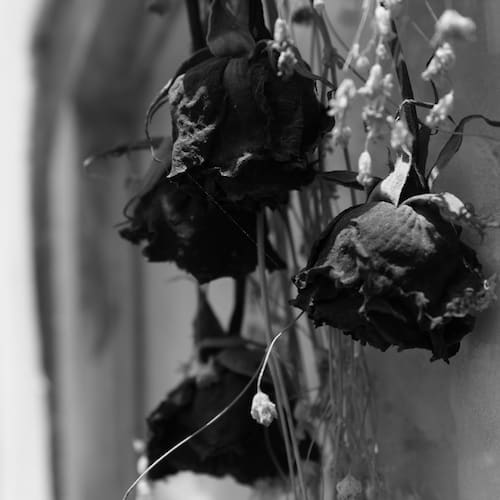

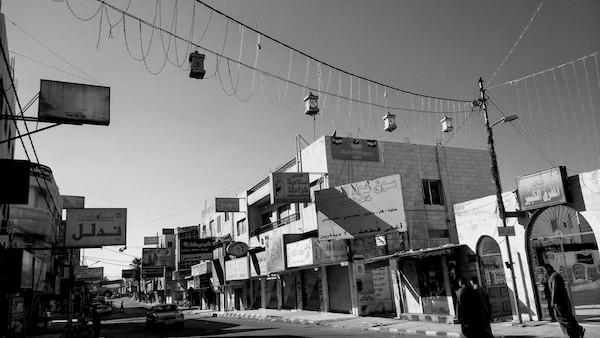
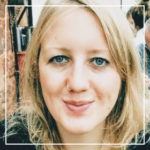
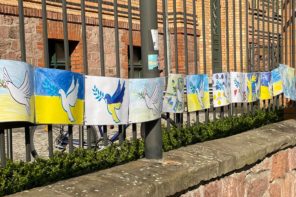




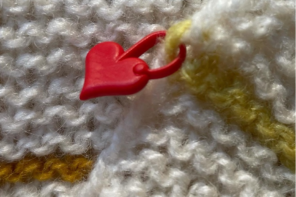
An eloquent, deeply felt and thought-provoking piece.